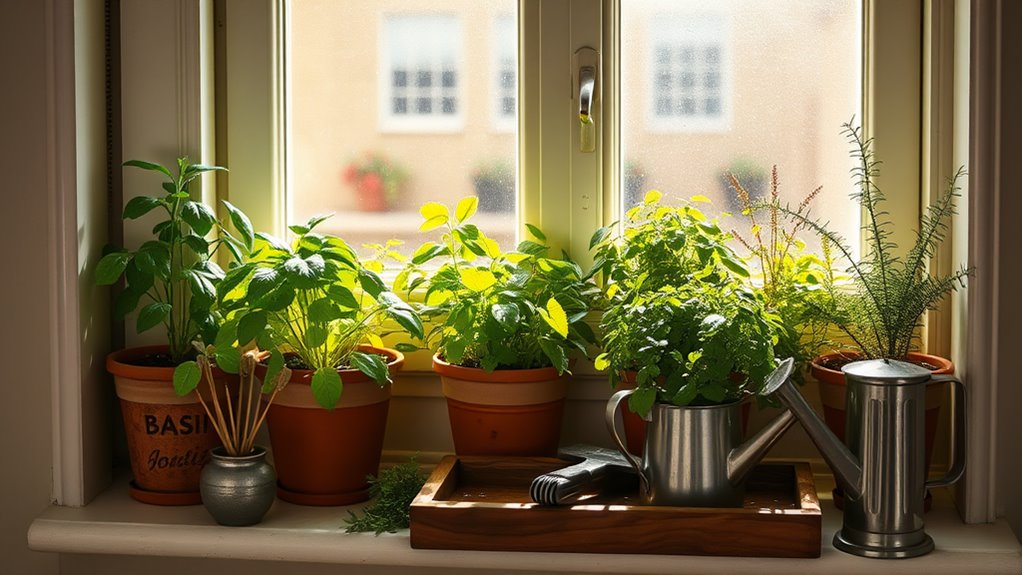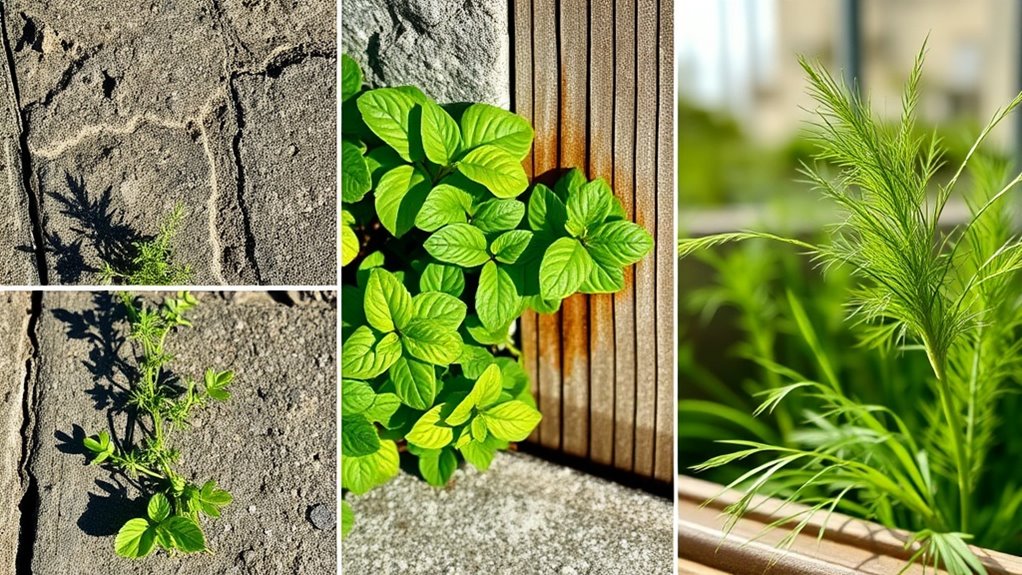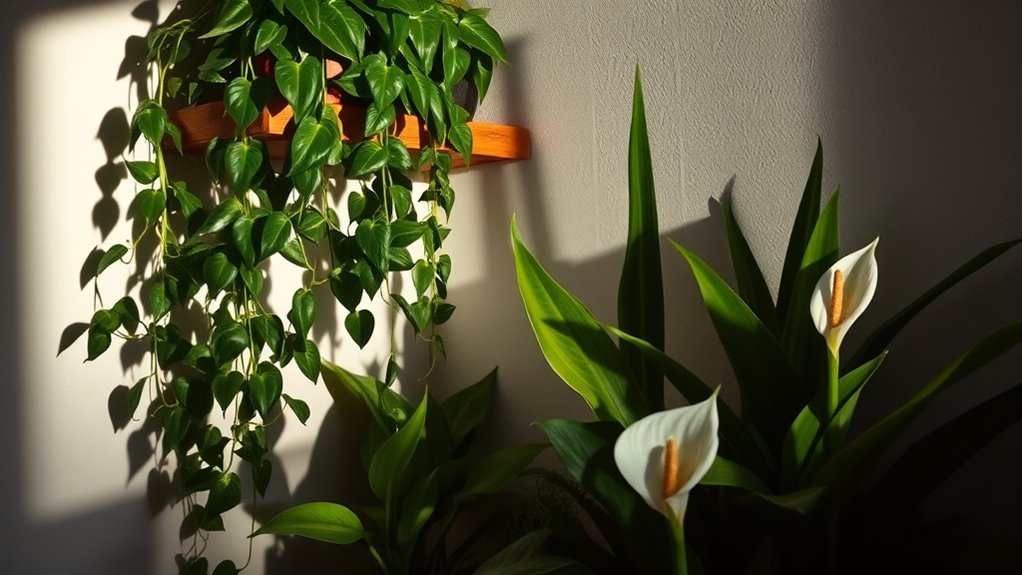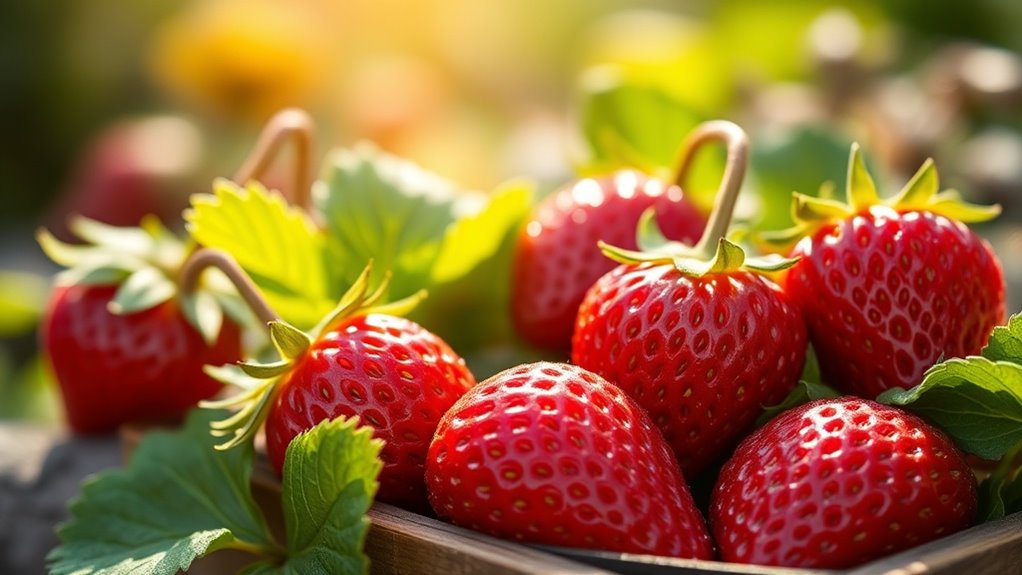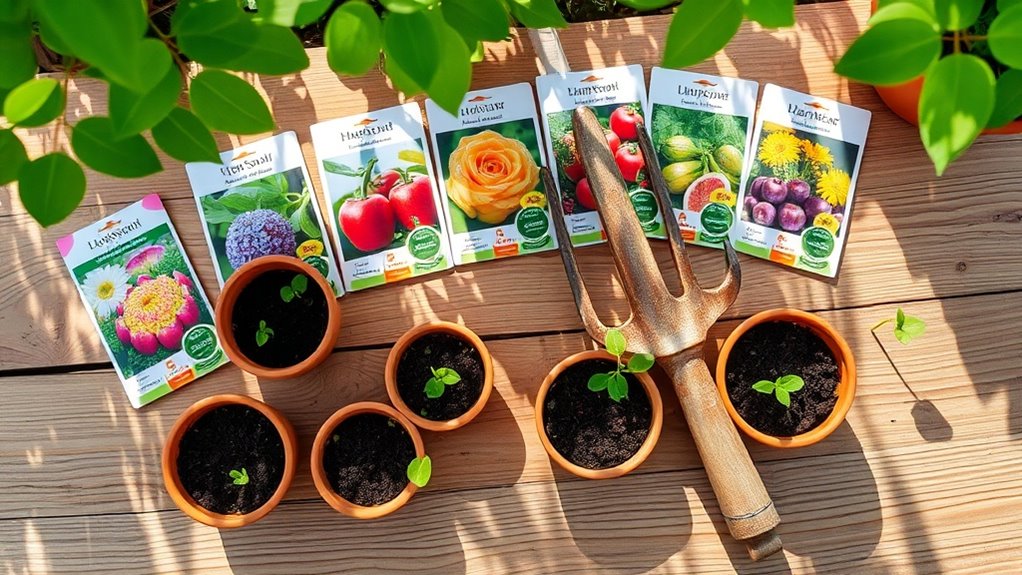How to Grow Fresh Herbs on Your Windowsill All Year Long
Growing fresh herbs on your windowsill year-round is not just a hobby; it’s a practical way to enhance your cooking and improve your indoor air quality. By selecting the right herbs, using appropriate pots and soil, and understanding their light and water needs, you can cultivate a thriving herb garden. But, the process involves more than just placing a few plants on your sill. Let’s explore the essential steps to ensure your herbs flourish throughout every season.
Key Takeaways
- Choose herbs like basil, thyme, and parsley that adapt well to limited sunlight and container growth.
- Use pots with drainage holes and lightweight, well-aerated potting mix to prevent root rot.
- Ensure herbs receive 6 to 8 hours of bright, indirect sunlight daily or supplement with grow lights.
- Water when the top inch of soil is dry and fertilize with a balanced, diluted fertilizer every four to six weeks.
- Monitor temperature and humidity, prune regularly, and check for pests to maintain healthy herbs year-round.
Choosing the Right Herbs for Indoor Growth
When it comes to choosing the right herbs for indoor growth, which varieties thrive best on your windowsill? To grow herbs indoors successfully, opt for varieties like basil, thyme, and parsley.
These herbs flourish in limited sunlight and adapt well to container life.
Basil requires about 6-8 hours of light daily, while thyme and parsley can thrive with slightly less.
Consider the temperature too; herbs prefer a range between 65°F to 75°F.
Ensure proper air circulation, as stagnant air can hinder growth. Additionally, the right container size can significantly impact root development and overall health of your herbs.
Potting and Soil Selection
Selecting the right herbs is just the beginning; the potting and soil you choose play a significant role in their growth and health.
Use pots with drainage holes to prevent waterlogging, which can lead to root rot.
Opt for a high-quality potting mix that’s lightweight and well-aerated; a blend containing peat moss, perlite, and vermiculite works well.
This mixture retains moisture while allowing roots to breathe.
Avoid garden soil, as it can compact and harbor pests.
Additionally, consider adding organic fertilizers to enrich the soil, promoting robust growth and flavor in your herbs.
Proper potting ensures your herbs thrive indoors. Providing proper light conditions is also crucial for their overall development and vitality.
Light Requirements for Optimal Growth
Light is crucial for the healthy growth of your herbs, as it directly impacts photosynthesis and overall vitality.
Most herbs thrive with 6 to 8 hours of bright, indirect sunlight daily.
South-facing windows are ideal, providing the necessary intensity.
If natural light is limited, consider using fluorescent or LED grow lights, which can supplement your herbs’ needs effectively.
Position the lights about 6 to 12 inches above the plants, keeping them on for 12 to 16 hours a day.
Be mindful of signs of inadequate light, such as leggy growth or pale leaves, and adjust accordingly to promote robust development. Additionally, indoor salad gardens can also benefit from similar light conditions, making it easier to grow a variety of plants together.
Watering and Fertilizing Your Herbs
Proper watering and fertilizing are essential for nurturing healthy herbs on your windowsill. Water your herbs when the top inch of soil feels dry, ensuring thorough saturation without waterlogging. Most herbs thrive in well-draining soil; excess moisture can lead to root rot. For fertilizing, use a balanced, water-soluble fertilizer every four to six weeks during the growing season. Dilute it to half the recommended strength to avoid nutrient burn. Herbs like basil and parsley benefit from nitrogen-rich fertilizers, while others, like thyme, prefer lower nitrogen levels. Adjust your routine based on your herbs’ specific needs for optimal growth. Additionally, consider growing culinary herbs indoors to maximize your culinary options throughout the year.
Maintaining Your Herb Garden Throughout the Year
After you’ve established a watering and fertilizing routine, keeping your herb garden thriving throughout the year requires attention to seasonal changes and specific care practices.
In winter, reduce watering as herbs enter dormancy; ensure they receive adequate light, possibly supplementing with grow lights.
In spring and summer, monitor humidity and temperature, as herbs flourish in warmer conditions.
Regularly prune to encourage growth and prevent flowering, which can diminish flavor.
Check for pests like aphids and spider mites, treating infestations promptly.
Rotate pots occasionally for even light exposure, and maintain consistent soil moisture to optimize growth and flavor throughout the year. Additionally, consider the best herbs to grow indoors, as they can significantly enhance your culinary experience.

